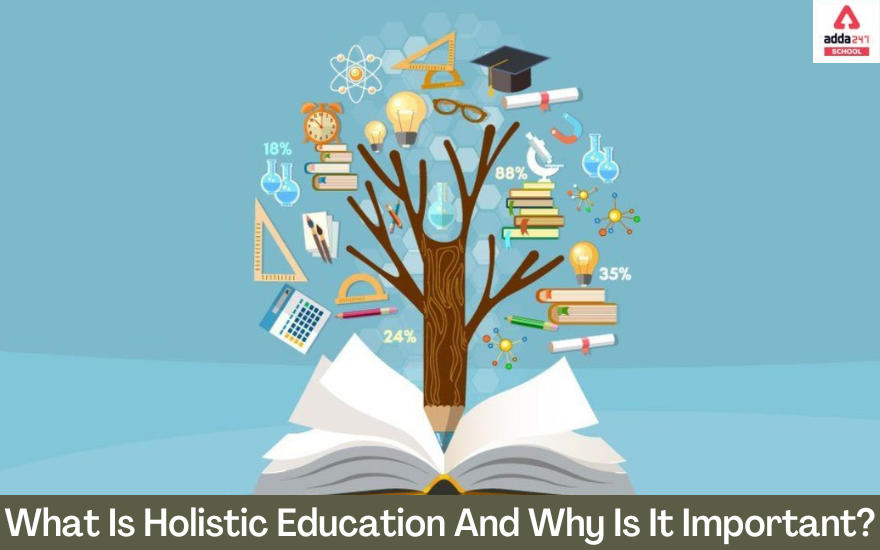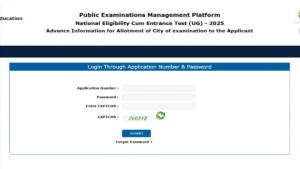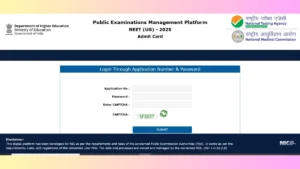Table of Contents
Holistic Education
Holistic Education: As schools strive to raise student achievement, the holistic education idea—the principle of educating the full person in addition to fundamental academics—is gaining ground in learning communities. Many organizations are becoming aware that kids want more from their education than simply a solid grounding in the fundamental subjects; they also require community support and the opportunity to grow in their capacity for compassion for others.
Officials from state governments and school districts set the tone for whether academic-centric or holistic learning principles will be prioritized in learning settings. However, teachers are responsible for putting learning policies into action. They also have the best chance of assisting students in discovering their identities and the significance of links to their community and the wider world by using holistic teaching strategies. The futures of children may be shaped through holistic learning and other teaching practices, as educators can discover by pursuing a Master of Education in Education Policy and Leadership or a Master of Arts in Teaching.
Holistic Education Meaning
Holistic Education Meaning: The term “holistic education” describes the incorporation of many aspects of life, such as economics, health, and nutrition, into education. It is a progressive method of education.
A personalized learning route that varies from student to student is holistic education. The system fundamentally recognizes that no two people are the same. Some students catch up on new material more quickly than others, who may need more time to do so. Contrary to traditional teaching, this distinction is taken into account.
Due to the availability of information access for kids, holistic education is more crucial than ever. Although the sheer amount of information available online might be daunting, students who have become accustomed to accessing it can readily separate the useful information from irrelevant information.
A holistic education places a strong emphasis on helping each student find their own unique path. This type of instruction is sometimes referred to as “whole child education.” The key focus areas of holistic education include the development of the student’s emotional, intellectual, physical, spiritual, and social components.
Holistic Education: Importance
An alternative to the conventional teaching-learning approach is holistic education. Numerous studies have demonstrated that children may quickly and efficiently learn a wide range of dynamic, interrelated abilities via engaging in fun learning situations. The comprehensive approach strives to empower students to utilize their academic learning as a footing for their emotional and social growth rather than teaching school topics in isolation. Children’s healthy growth is mostly dependent on the five abilities of holistic development: cognitive, verbal, social, emotional, and physical. To successfully navigate and live in this unsettling and constantly changing environment, these abilities are necessary.
Holistic Education: The Role of Teacher’s
The teacher is viewed as a person of great power in the conventional educational system who manages every element of instruction in the classroom. In contrast, a teacher who practices holistic education is seen as a friend, mentor, facilitator, or experienced companion. This encourages a great level of openness when interacting with teachers and helps pupils overcome their fears.
In addition to teaching students to respect and value one another’s differences, holistic education aims to encourage open and honest dialogue between individuals. The majority of schools operating under the system do not opt to award grades or awards since competition is replaced by collaboration. From an early age, students begin to acquire a cooperative mindset that they take into adulthood and their professional careers. By encouraging cooperation among students rather than focusing on academic excellence, teachers hope to spread the idea of reward. This contributes to creating a far more positive environment at school.
Holistic Education’s Advantages
- Builds Confidence: Teachers give kids several opportunities to succeed in order to inculcate and aid in the development of their confidence. Teachers can identify each student’s individual abilities thanks to a comprehensive curriculum that treats every student equally.
- Incorporates Emotional Reflection: Emotional reflection is incorporated into daily activities by teachers who give their pupils time to think, reflect, or meditate. Literature that gives many viewpoints on social issues or strong listening and observation skills might be the subject of lessons to teach empathy.
- Enhanced Mental & Emotional Well-Being: Students have a greater chance of graduating with self-awareness, confidence, and a feeling of social duty in a supportive setting where social and emotional development is prioritized alongside academics.
- Academic Achievements: Regardless of background or environment, holistic education may raise academic performance. It offers a helpful learning environment and accommodates different learning preferences.
- Reduced Psychological Effect of Issues: It has been demonstrated that the whole-child approach to education reduces the psychological impact of problems by stressing integrated learning principles.
Traditional Versus Holistic Educational Approaches
The Holistic Education Concept Contests That:-
- It emphasizes the student’s physical, social, emotional, intellectual, and spiritual growth.
- The tutors’ function as a facilitator in encouraging learning belongs to them.
- The bond of collaboration between tutors, parents, and students is quite strong.
- It supports a positive agenda and advocates for Gandhi’s Basic Education, peace education, and values education.
- It encourages the use of classrooms that employ active learning and is more pertinent to the student’s life in general.
- When concentrating on the practical, intellectual, and creative sides of learning, gives an enormous amount of mental and emotional freedom.
- Ensuring that the curriculum takes into account the students’ skills, needs, and interests, helps them develop their creativity, inspiration, and intuition.
- It enhances and fosters the learner’s creative and cognitive abilities and helps them develop a sense of meaning, purpose, and identity in their social connections.
- It is a centralized educational system that emphasizes knowledge and skills development, and it is transformational in character.
Related Post:
- Role Of Newspaper In Daily Life To Enhance Knowledge
- How To Complete Paper On Time?
- How To Excel In An Interview?
- How To Reduce Screen Time For Kids?
- How To Score Good Marks In 10th And 12th Board Exam?
Holistic Education: FAQs
Ques 1. Why is it crucial for a teacher to have a holistic understanding of their students?
Ans. It promotes the urge to seek out meaning and insight, and interact with the outside world, and The methodology equips students to evaluate critically the political, moral, and cultural circumstances of their own lives.
Ques 2. What does “holistic education” mean to you?
Ans. A complete method of educating pupils, holistic education aims to meet students’ needs on all levels, including academically, socially, morally, and emotionally.
Ques 3. How can holistic education be implemented?
Ans. Here are some examples of how to adopt a holistic curriculum:
- Accept location-based learning. Learning takes happens inside local community locations when education is place-based.
- Take part in sports, the arts, and music.
- Engage in inquiry-based learning.



 NEET City Intimation Slip 2025 Available...
NEET City Intimation Slip 2025 Available...
 Download NEET UG Admit Card 2025 @neet.n...
Download NEET UG Admit Card 2025 @neet.n...
 Easiest Ways to Download NEET UG Admit C...
Easiest Ways to Download NEET UG Admit C...










